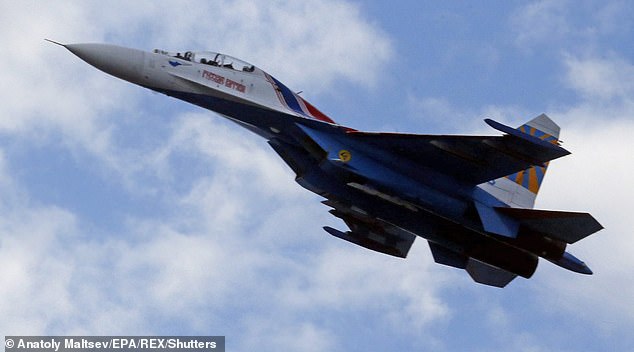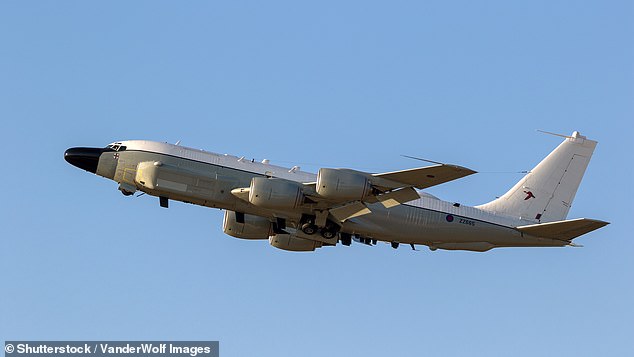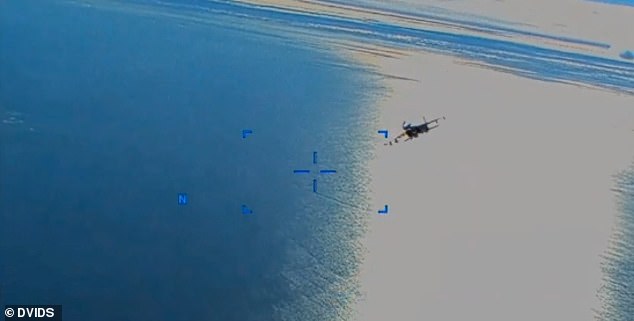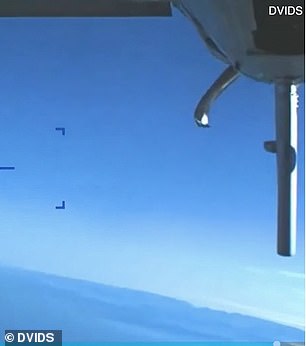Russian pilot tried to shoot down RAF surveillance aircraft over the Black Sea in 2022 because he believed he had permission – but his missile missed
Russian pilot tried to shoot down RAF surveillance planes over the Black Sea in 2022 because he thought he had clearance – but his missile missed
A Russian pilot attempted to shoot down an RAF surveillance plane over the Black Sea because he mistakenly believed he had permission to do so.
The pilot of the SU-27 fighter jet fired two missiles at the RAF RC-135 Rivet Joint reconnaissance aircraft on September 29 last year, with the first missing the British aircraft rather than malfunctioning as claimed by Russia at the time.
At the time, British Defense Secretary Ben Wallace acknowledged the incident, telling Parliament that two Russian fighter jets “recklessly” came within 15 feet of the RAF plane and one “fired a missile in the area.”
Russian Defense Minister Sergei Shoigu blamed it on a “technical glitch” and Wallace, after speaking to other Russian defense officials, accepted the explanation and drew a line under the incident.
But now three leading Western defense sources with knowledge of the incident have told the press BBC that Russian communications intercepted by the RAF surveillance plane show that one of the Russian pilots believed he had been cleared to target the British plane.

The pilot of the SU-27 fighter jet (file image) fired two missiles at the British military aircraft, with the first missing the target rather than malfunctioning as claimed by Russia at the time.

An RAF RC-135 Rivet Joint spy plane (file image) was flying over international waters near Crimea at the time of the September incident.
This was after he received an ambiguous order from a Russian ground station, the sources said.
The second Russian pilot thought the opposite and swore at his comrade as he fired his first missile which came dangerously close to the RAF reconnaissance plane.
If a Russian missile had blown Rivet Joint out of the skies over the Black Sea, Britain and its NATO allies might have been forced into war.
According to Article 5 of NATO’s founding treaty, member states agree that an armed attack against one or more of them “shall be considered as an attack against all of them.”
Should such an attack occur, each NATO member will assist the country that has been attacked with any action it ‘deems necessary’.
The RAF regularly flies over the international waters of the Black Sea, the Baltic States and eastern Poland to gather intelligence.
The Rivet Joint aircraft’s role is to suck up electronic transmissions and communications – the aircraft is also known as a ‘nuke sniffer’ due to its ability to detect radioactivity.
British and US aircraft continued to fly these reconnaissance flights after the chilling incident in September, but RAF surveillance planes are now escorted by Typhoon fighters, while the US resorts to using unmanned surveillance drones.
Pentagon spokesman Brig. General Patrick Ryder said in March that it is important to keep the Black Sea and the skies above it open to all countries.
“The Black Sea is a crucial international sea lane that supports many of our NATO allies, including Romania, Bulgaria and Turkey, and does not belong to any one country,” he said.
Ryder’s comments came after yet another aerial incident in which Russian jets dumped fuel and ultimately crashed into a US surveillance drone in March.

Video footage shows the Russian fighter jet approaching the US drone from behind in March and beginning to release fuel as it passed – the Pentagon said


After impact, the onboard camera shows a broken propeller (L) and a comparative operational propeller (R) turning. Russia previously said it had made no contact with the drone
Drone footage showed the shocking moment when the Su-27 aircraft from Moscow approached the US MQ-9 unmanned aerial vehicle (UAV) from behind on March 14 and secured its propeller over international airspace.
US forces had to shoot down the $32 million surveillance drone in international waters after the encounter, sparking a race between Moscow and Washington to get it back.
On March 15, Russian ships were spotted at the crash site trying to find the debris, although the Pentagon insisted the parts could not be recovered and that all intelligence had been cleared.
Moscow insisted its plane had not made contact with the drone and instead blamed it on “sharp maneuvering.”
But experts say it was likely an accidental collision as Russian pilots used increasingly aggressive tactics to force the drone to change course.
This is a breaking news story, more to come…
